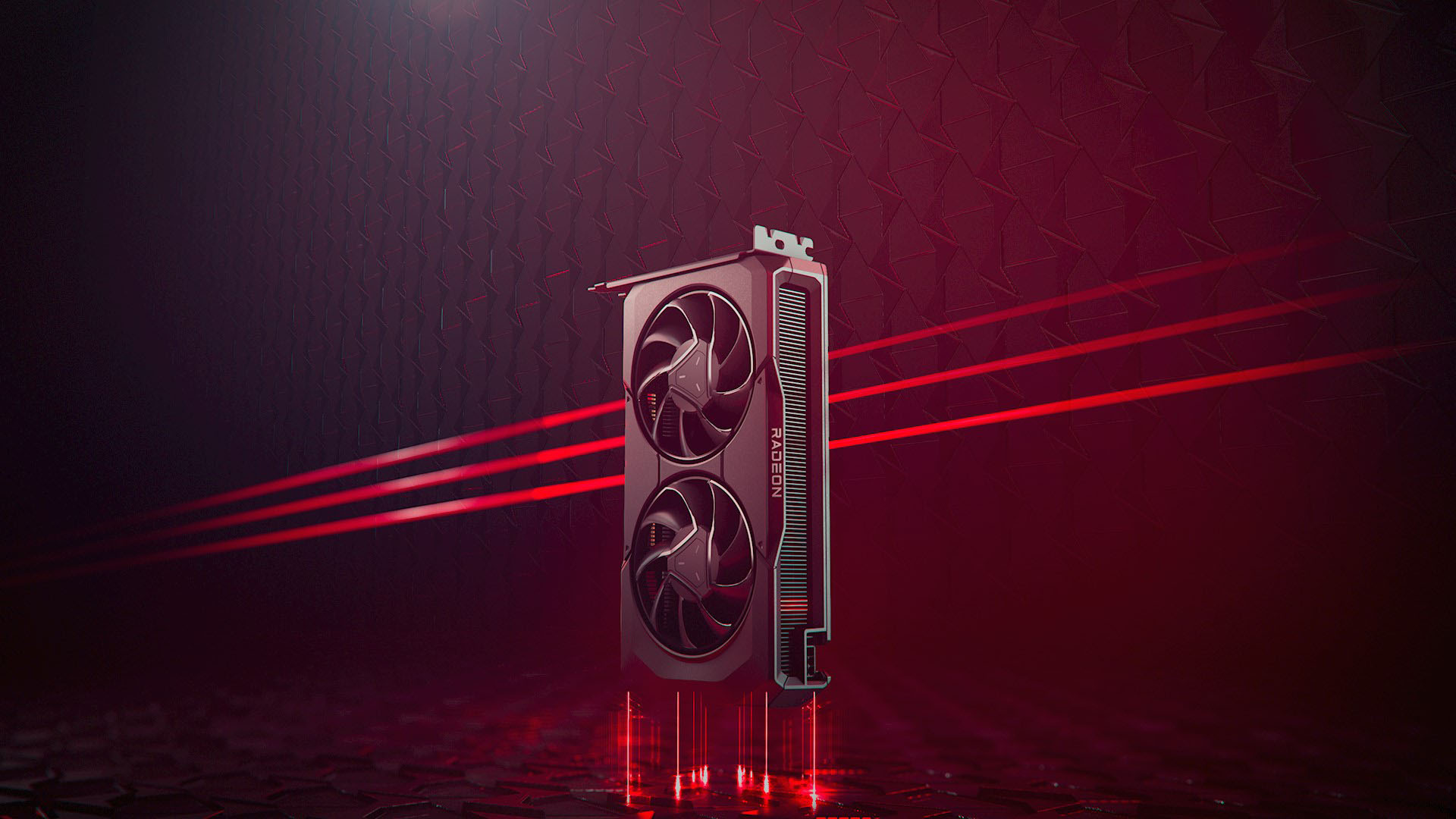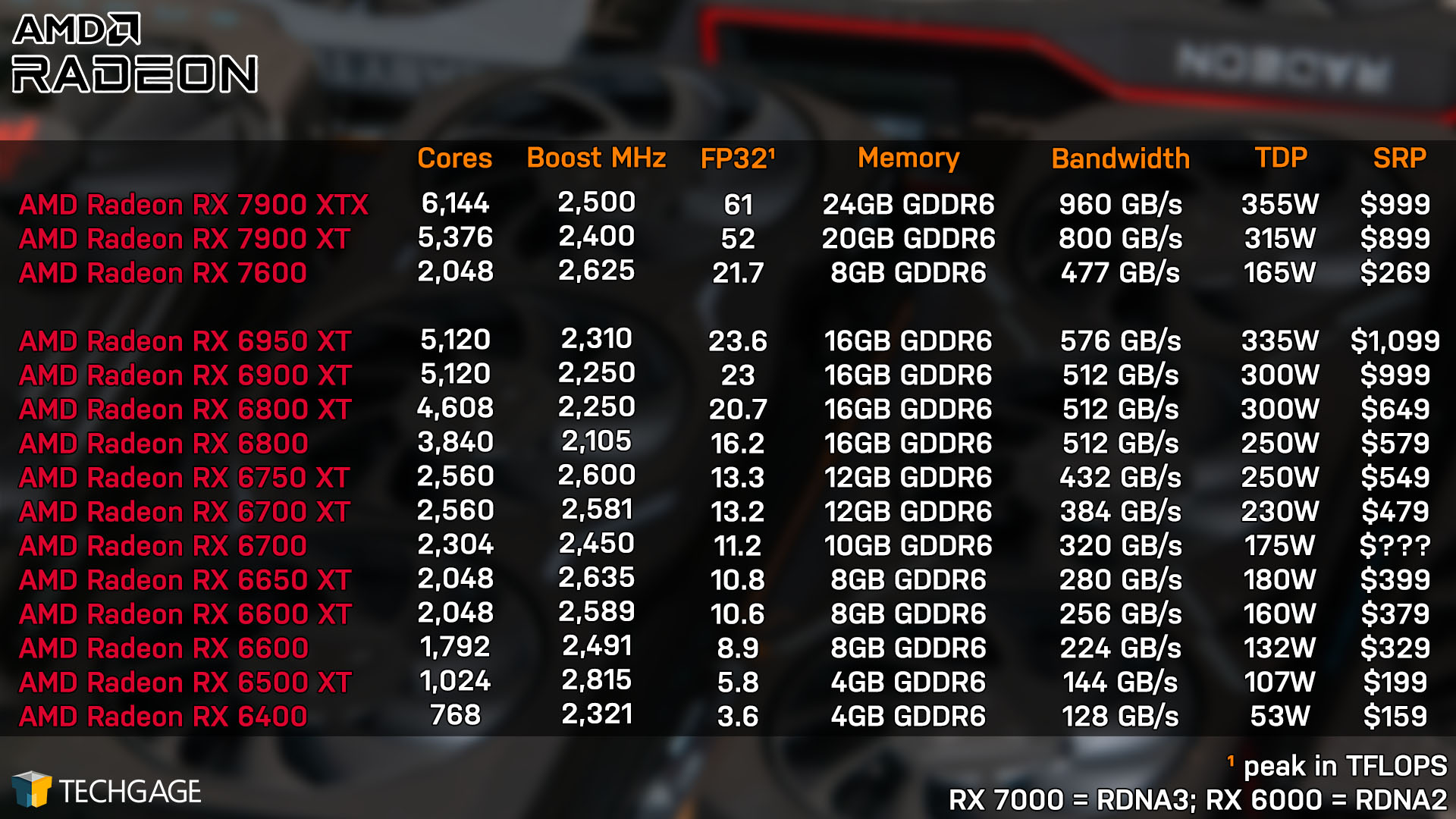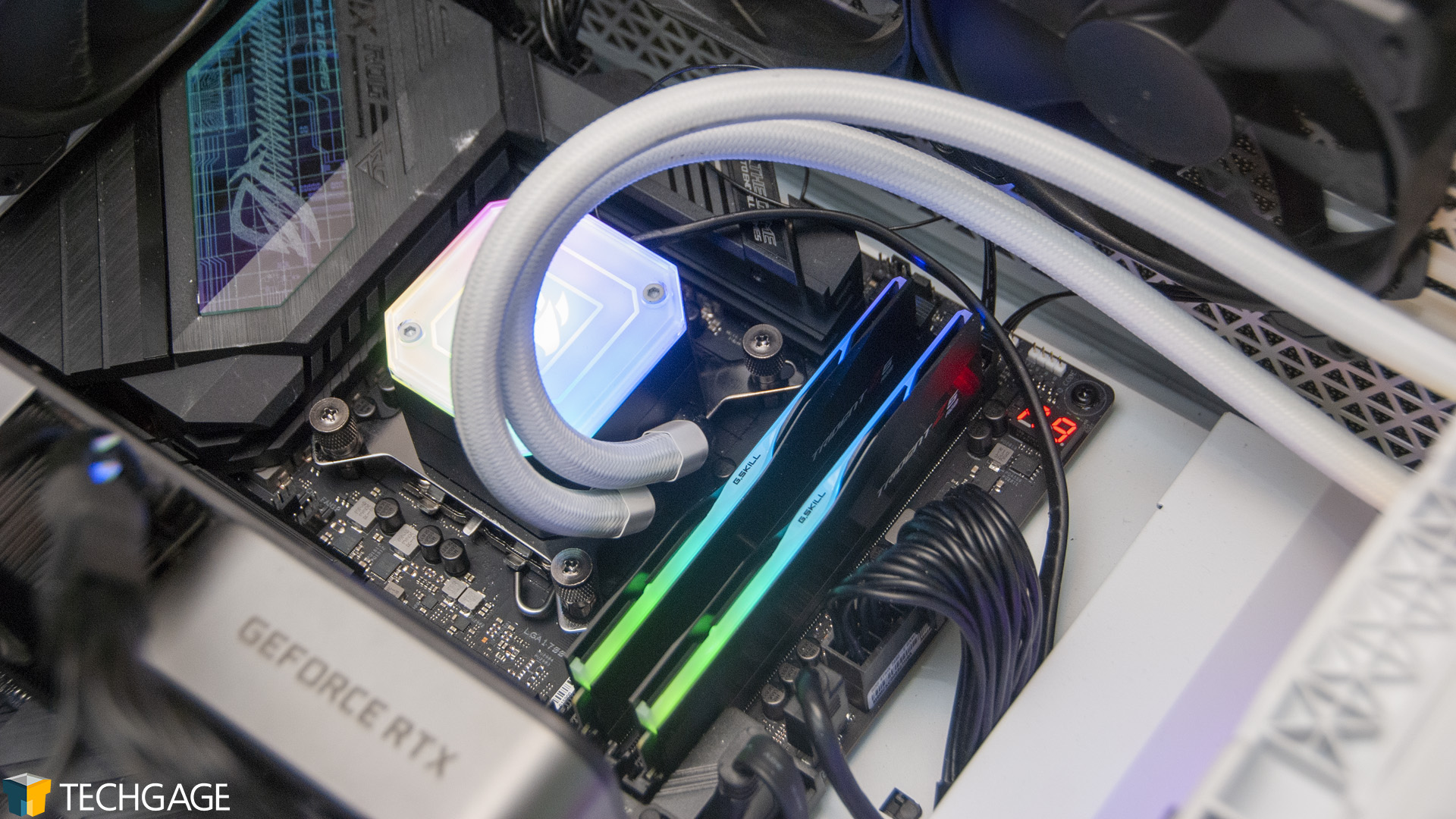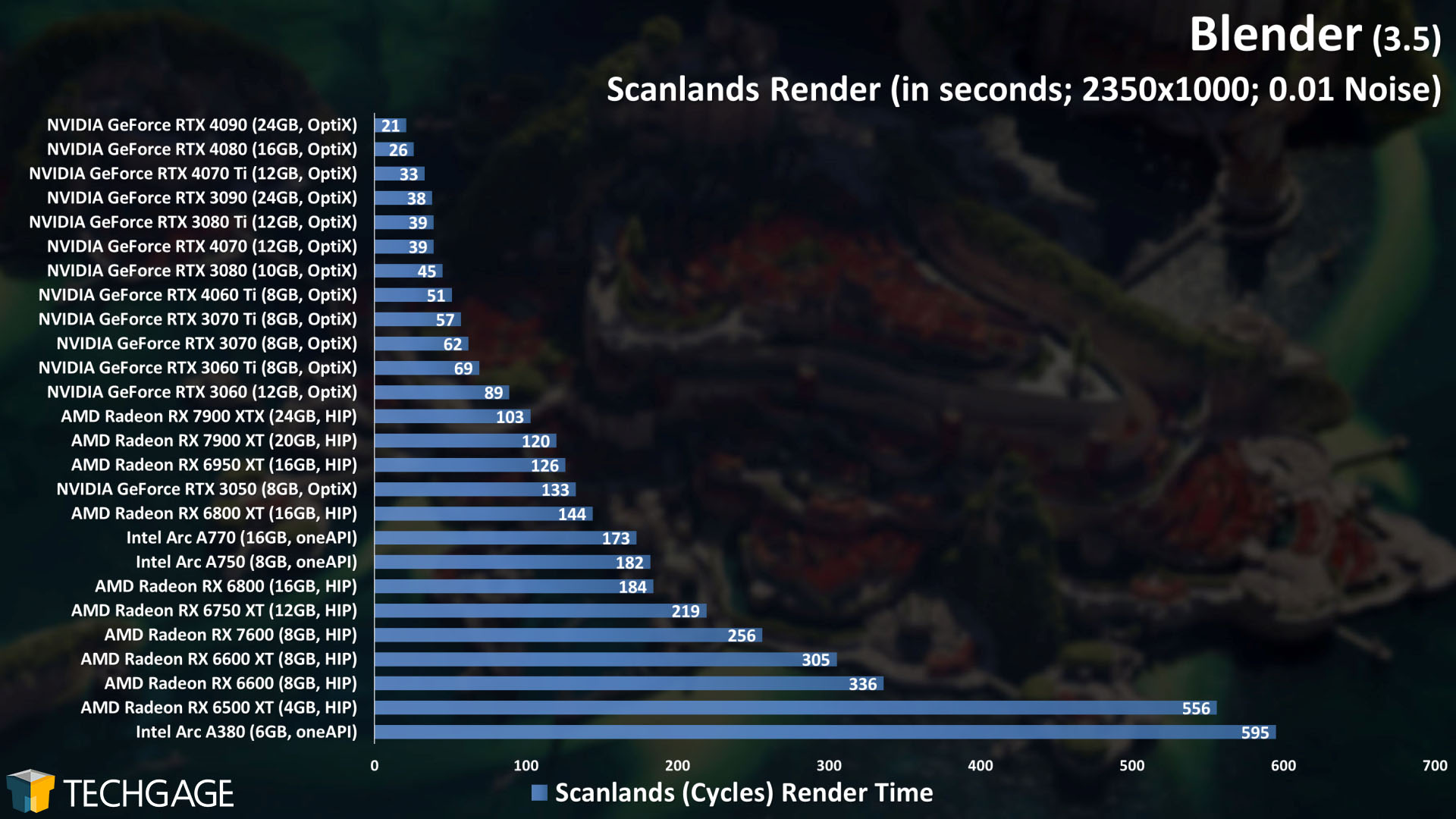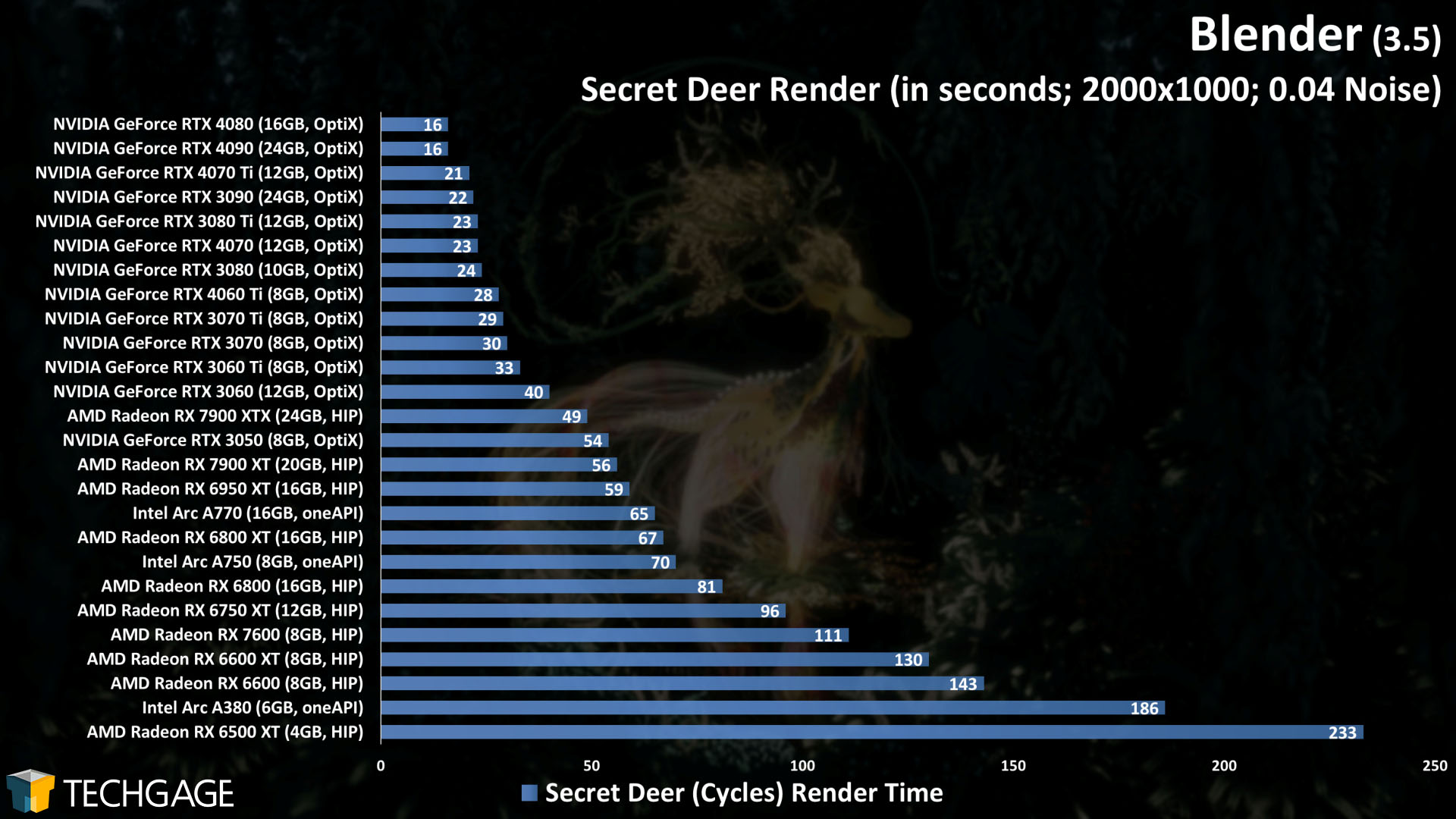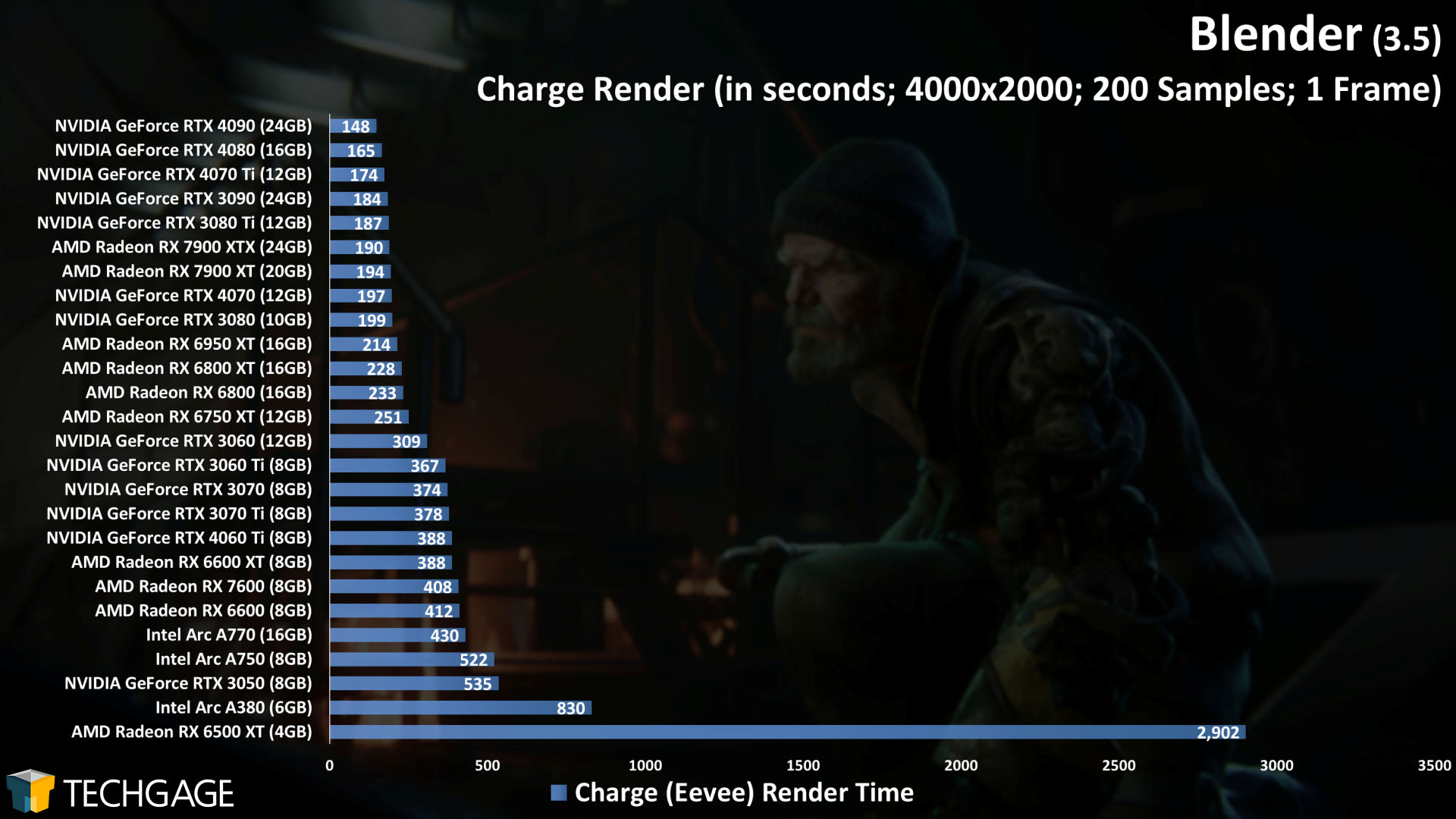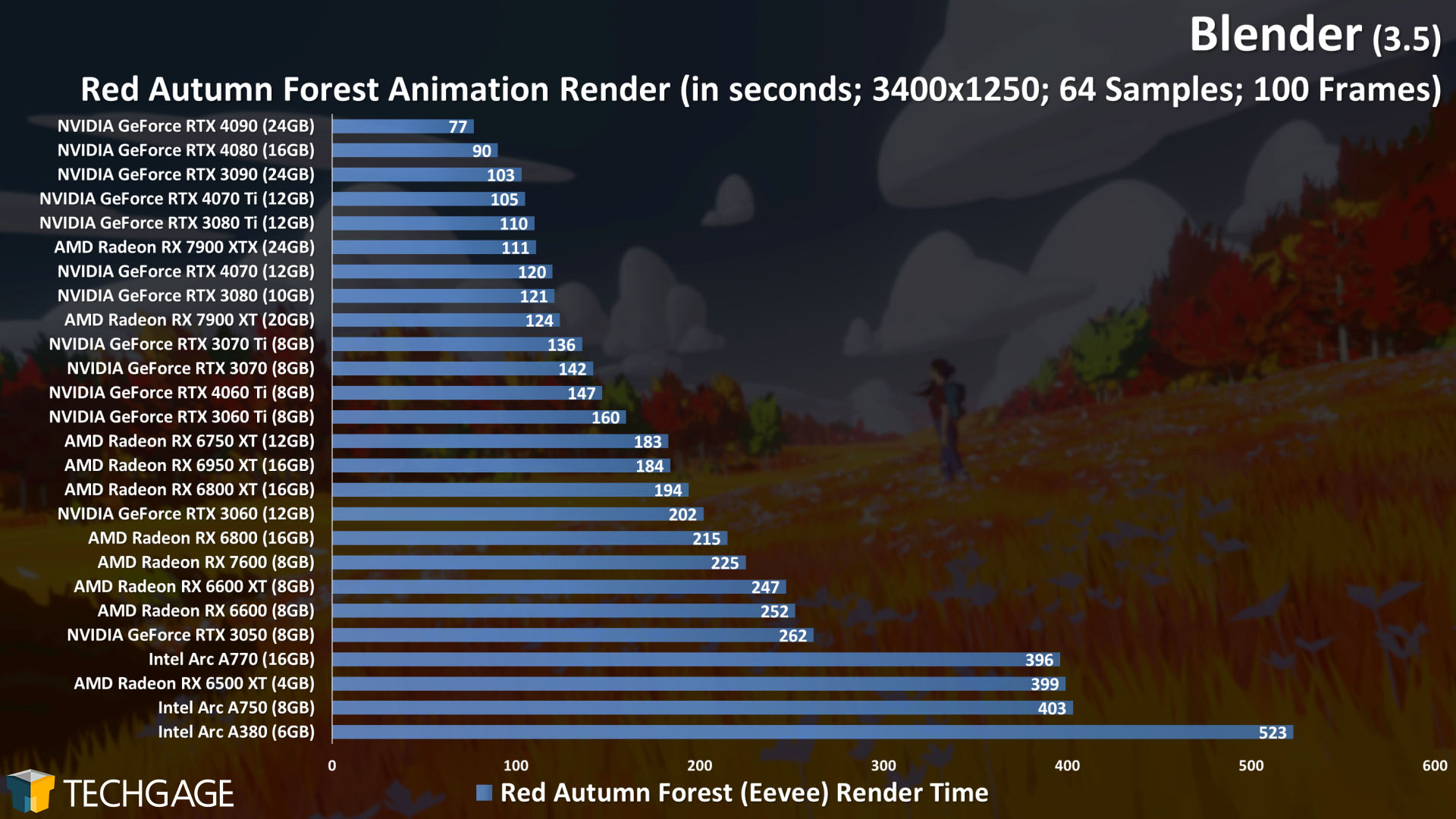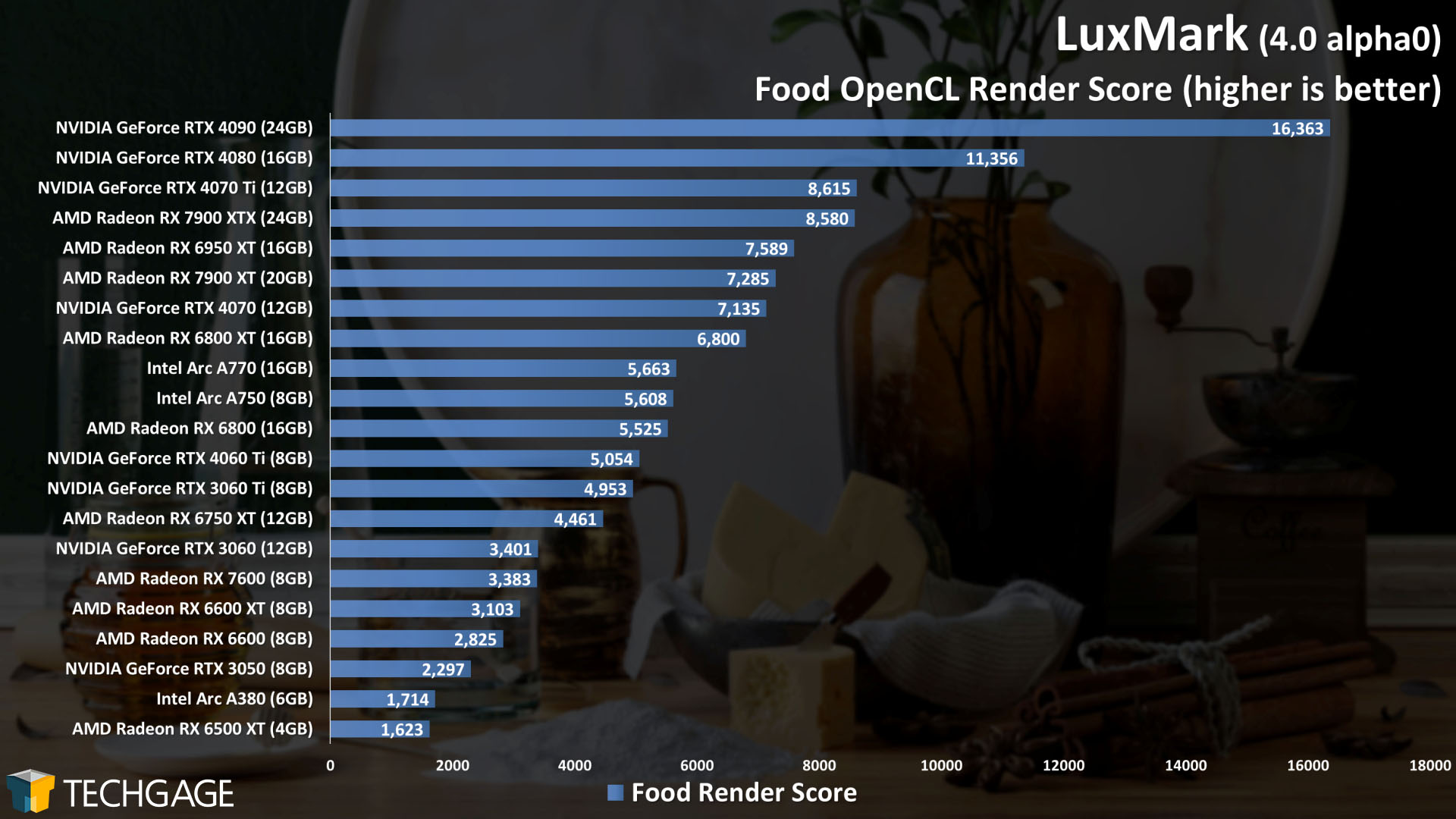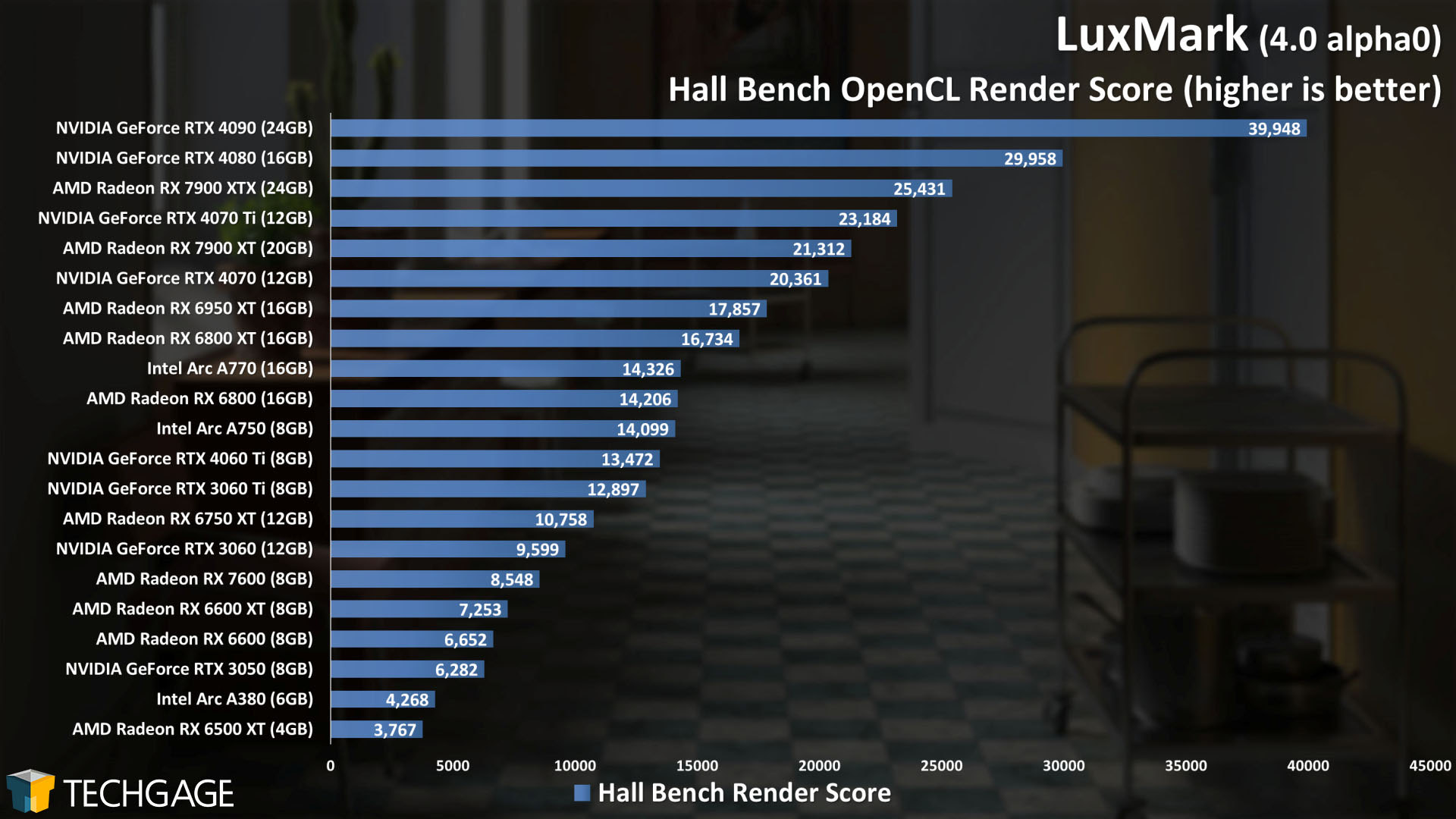- Qualcomm Launches Snapdragon 4 Gen 2 Mobile Platform
- AMD Launches Ryzen PRO 7000 Series Mobile & Desktop Platform
- Intel Launches Sleek Single-Slot Arc Pro A60 Workstation Graphics Card
- NVIDIA Announces Latest Ada Lovelace Additions: GeForce RTX 4060 Ti & RTX 4060
- Maxon Redshift With AMD Radeon GPU Rendering Support Now Available
AMD Radeon RX 7600 8GB Creator Review
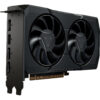
AMD’s third RDNA3-based Radeon has just launched in the form of the RX 7600, an 8GB offering priced at $269. AMD claims that this card targets “high” 1080p gaming, but for our first look, we’re going to delve into its performance across creator workloads, including encoding and rendering.
Page 1 – AMD Radeon RX 7600: Introduction & Rendering
Hot on the heels of NVIDIA launching a new Ada Lovelace-based GeForce yesterday, AMD today lifts the veil off of its own new RDNA3 addition. While NVIDIA’s $399 GeForce RTX 4060 Ti helped fill in a gap near the bottom of its current generation series, AMD’s decided to skip over possible RX 7700 and RX 7800 cards to instead introduce a new lower-end option: the $269 Radeon RX 7600.
At $269, the Radeon RX 7600 becomes one of the least-expensive current-gen cards going. NVIDIA’s current lowest-end model just became the $399 RTX 4060 Ti. AMD’s strongest current-gen competition at this price-point comes from Intel, with its Arc A750 being regularly found for around $249.
In a pre-briefing, AMD said that the RX 7600 caters to the high-end 1080p gamer. For creators, faster ray accelerators are bundled in, along with an upgraded video encode engine that includes support for AV1. As we talked about in our RTX 4060 Ti review, 8GB framebuffers are getting a bad rap lately for being too limiting (for good reason in some cases), but on a $269 RX 7600, it’s hard to imagine seeing more.
In comparing the RX 7600 to the last-gen RX 6600, the new GPU offers 14% more cores, faster clock speeds, increased memory bandwidth, and support for DisplayPort 2.0. It of course also includes support for AV1 encoding, which is great to have if you encode videos often, since it will become the new standard going forward.
With our NVIDIA review yesterday, we spent a bit of time talking about potential issues with 8GB framebuffers for creator workloads, but as mentioned above, it’s hard to imagine seeing more than 8GB on a $269 GPU right now, and no last-gen GPU with more memory can be had for a price that’s comparable. We’ll elaborate on these thoughts in our conclusion, after poring over the results.
Below is a quick look at our test system and basic methodologies, which will be followed by rendering results. Page 2, also known as the final page, will cover encoding and viewport.
| Techgage Creator GPU Testing PC | |
| Processor | Intel Core i9-13900K (3.0GHz, 24C/32T) |
| Motherboard | ASUS ROG STRIX Z690-E GAMING WIFI CPUs tested with 2305 BIOS (March 10, 2023) |
| Memory | G.SKILL Trident Z5 RGB (F5-6000J3040F16G) 16GB x2 XMP-enabled w/ freq. set to DDR5-6000 (30-40-40-96, 1.35V) |
| AMD Graphics | AMD Radeon RX 7900 XTX (24GB; Adrenalin 23.4.1) AMD Radeon RX 7900 XT (20GB; Adrenalin 23.4.1) AMD Radeon RX 7600 (8GB; Beta 23.10.01.16) AMD Radeon RX 6950 XT (16GB; Adrenalin 23.4.1) AMD Radeon RX 6800 XT (16GB; Adrenalin 23.4.1) AMD Radeon RX 6800 (16GB; Adrenalin 23.4.1) AMD Radeon RX 6750 XT (12GB; Adrenalin 23.4.1) AMD Radeon RX 6600 XT (8GB; Adrenalin 23.4.1) AMD Radeon RX 6600 (8GB; Adrenalin 23.4.1) AMD Radeon RX 6500 XT (4GB; Adrenalin 23.4.1) |
| Intel Graphics | Intel Arc A770 (16GB; Arc 31.0.101.4311) Intel Arc A750 (8GB; Arc 31.0.101.4311) Intel Arc A380 (6GB; Arc 31.0.101.4311) |
| NVIDIA Graphics | NVIDIA GeForce RTX 4090 (24GB; Studio 531.61) NVIDIA GeForce RTX 4080 (16GB; Studio 531.61) NVIDIA GeForce RTX 4070 Ti (12GB; Studio 531.61) NVIDIA GeForce RTX 4070 (12GB; Studio 531.61) NVIDIA GeForce RTX 4060 Ti (8GB; Beta 531.93) NVIDIA GeForce RTX 3090 (24GB; Studio 531.61) NVIDIA GeForce RTX 3080 Ti (12GB; Studio 531.61) NVIDIA GeForce RTX 3080 (10GB; Studio 531.61) NVIDIA GeForce RTX 3070 Ti (8GB; Studio 531.61) NVIDIA GeForce RTX 3070 (8GB; Studio 531.61) NVIDIA GeForce RTX 3060 Ti (8GB; Studio 531.61) NVIDIA GeForce RTX 3060 (12GB; Studio 531.61) NVIDIA GeForce RTX 3050 (8GB; Studio 531.61) |
| Storage | WD Blue 3D NAND 1TB x3 (SATA 6Gbps) |
| Power Supply | Corsair RM1000x (1000W) |
| Chassis | Corsair 4000X Mid-tower |
| Cooling | Corsair H150i ELITE CAPELLIX (360mm) |
| Et cetera | Windows 11 Pro 22H2, Build 22621 Intel Chipset Driver: 10.1.19222.8341 Intel ME Driver: 2242.3.34.0 |
| All product links in this table are affiliated, and help support our work. | |
All of the benchmarking conducted for this article was completed using an up-to-date Windows 11 (22H2), the latest Intel chipset driver, as well as the latest (as of the time of testing) graphics driver.
Here are some general guidelines we follow:
- Disruptive services are disabled; eg: Search, Cortana, User Account Control, Defender, etc.
- Overlays and / or other extras are not installed with the graphics driver.
- Vsync is disabled at the driver level.
- OSes are never transplanted from one machine to another.
- We validate system configurations before kicking off any test run.
- Testing doesn’t begin until the PC is idle (keeps a steady minimum wattage).
- All tests are repeated until there is a high degree of confidence in the results.
This is the second of three reviews we’ll be releasing this week, so as we did with the RTX 4060 Ti review, we’re going to commentate on each page’s set of results at the end, rather than on each test individually. If rendering isn’t relevant to you, hit up the next page.
Blender
LuxMark
In all of these results so far, the Radeon RX 7600 managed to not just beat out the RX 6600 (which was obviously expected), but also the RX 6600 XT – which was priced at $379 last generation.
When comparing AMD against itself in these rendering tests, good improvement has been made. When comparing against the competition, though, AMD unfortunately lags quite a bit behind in these tests. The Intel Arc A750 hovers around the same price-point, and it leaps ahead of the RX 7600 in most of these charts. The exception on the Intel side are the Blender Eevee tests, which demand more driver polish to improve.
Depending on the project, NVIDIA’s last-gen RTX 3060 beats out both AMD’s and Intel’s higher-end (or highest-end in Intel’s case) GPUs. The upcoming Blender 3.6 release will include RT acceleration for AMD GPUs, so we’re hoping those particular tests will be shaken up nicely soon.
On the next, and final page, we’re going to explore RX 7600 performance across encoding and viewport workloads, then sum up our thoughts.
Support our efforts! With ad revenue at an all-time low for written websites, we're relying more than ever on reader support to help us continue putting so much effort into this type of content. You can support us by becoming a Patron, or by using our Amazon shopping affiliate links listed through our articles. Thanks for your support!




